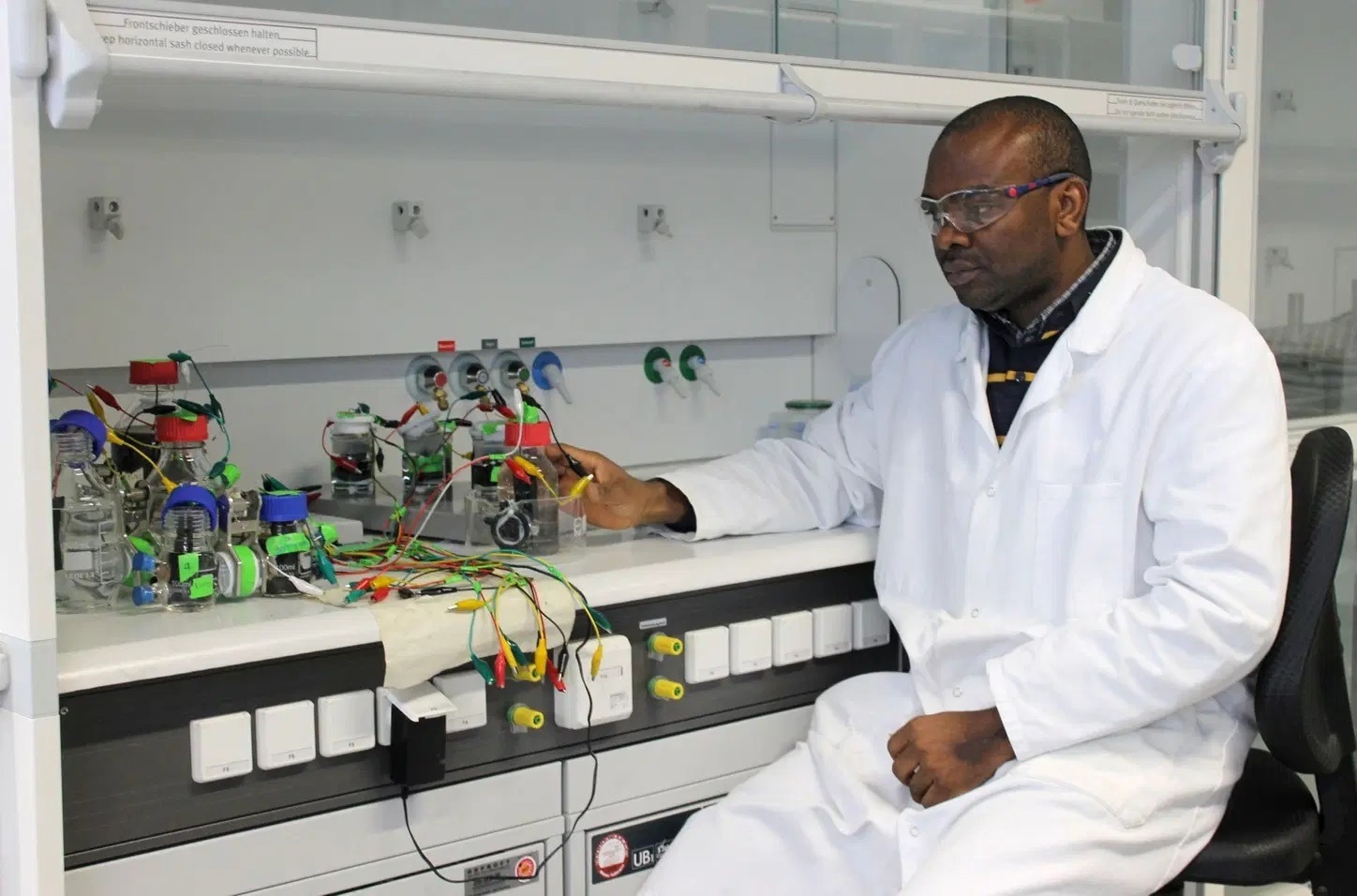Currently, microbial fuel cells are primarily used to produce electricity in research labs. The fuel cells need to be improved so that they can consistently produce higher amounts of electricity than they can now in order for industrial applications to be taken into consideration in the future.

Meshack Imologie Simeon, University of Bayreuth, investigates microbial fuel cells for wastewater treatment and electricity generation. Image Credit: UBT/Chr. Wißler
A research team from the University of Bayreuth has looked into the factors influencing this in a recent study that was published in the journal Biotechnology for Biofuels and Bioproducts. It has been demonstrated that selecting the right electrode material is crucial for improving stability and performance.
The metabolism of microorganisms, which consume organic compounds to release electrons, powers the electrical circuit in microbial fuel cells. These electrons are then transferred from the anode to the cathode of the fuel cell.
In its research into improving microbial fuel cells, the Bayreuth research team tested two different electrode materials: carbon felt and modified stainless steel mesh.
The stainless-steel mesh used for the electrodes of the cells, which had been modified with highly conductive carbon black and an eco-friendly polymer binder, produced the best results.
The ideal separation between the cathode and anode was 4 cm. This consistently produced large amounts of electricity that could, in theory, be used, for instance, to power environmental monitoring sensors in off-grid locations.
These fuel cells also enable the simultaneous generation of electrical power and soil decontamination from petroleum hydrocarbon contamination. As the study demonstrates, if the appropriate electrodes are available to capture the metabolic electrons, the efficacy of such detoxification strategies can be significantly increased.
The significantly higher performance we were able to achieve with the microbial fuel cell using the newly developed electrodes can be explained by the fact that this material provides a larger specific surface area with which the microorganisms can interact and capacitive features to internally store the bioelectricity. Therefore, the number of electrons released from microbial metabolism that enter the circuit is particularly high here.
Meshack Imologie Simeon, Study First Author and Doctoral Student, University of Bayreuth
Meshack Imologie Simeon is investigating the viability of bioelectricity-based sustainable energy production. While pursuing his Master’s degree at the University of Ibadan and working as a research assistant at the Federal University of Technology in Minna, Nigeria, he initially made contact with scientists researching this issue in Bayreuth.
As the study demonstrates, the intervals at which the microorganisms are fed also have an impact on the stability of the fuel cells and the amount of electricity produced. Particularly efficient was time-flexible feeding that begins when a deterioration in power generation is apparent.
It was discovered that this had a greater impact on improving fuel cell performance than consistent feeding at regular intervals.
The soil-based fuel cell was the subject of research by the Bayreuth team (Soil Microbial Fuel Cells): This kind of fuel cell functions with bacteria and other microbes, such as those found in soil from forested or agricultural areas.
Microbial DNA sequences were extracted from the electrodes to identify the various microorganism species responsible for the fuel cell’s power production.
Under the supervision of Dr Alfons Weig, these sequences were examined to determine where they came from in the Central Laboratory for DNA Analysis at the University of Bayreuth. Proteobacteria made up the majority of the population, but Firmicutes, another bacterial species, was also frequently found.
Our studies show that natural soils contain a mixture of different bacterial strains that are capable of direct electron transfer and can be used in fuel cells to generate bioelectricity. As far as we have been able to determine, the ratio of these strains in the mixture has no significant influence on the stability and performance of the fuel cell. The greatest influence is exerted by the electrode materials, on which the ohmic resistance in the circuit and the electrical capacity of the fuel cells depend.
Dr Ruth Freitag, Professor and Chair, Bioprocess Engineering, University of Bayreuth
Journal Reference
Simeon, M. I., et al. (2022) Optimization of soil microbial fuel cell for sustainable bio-electricity production: combined effects of electrode material, electrode spacing, and substrate feeding frequency on power generation and microbial community diversity. Biotechnology for Biofuels and Bioproducts. doi:10.1186/s13068-022-02224-9.